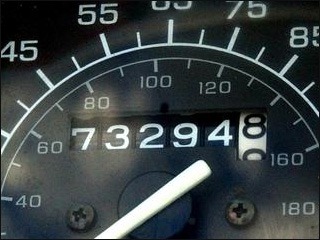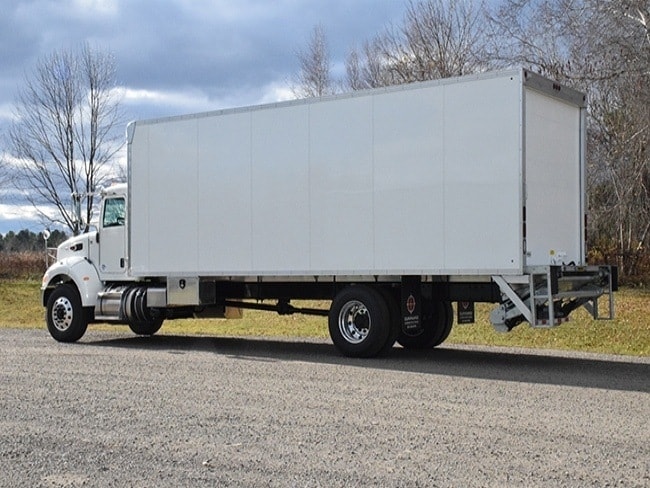After making the investment to purchase a new company vehicle, the question becomes: how long do you keep it for? We’ve all heard the old adage “drive it until the wheels fall off,” but is that truly most profitable decision? There are several factors to consider when analyzing a work truck replacement cycle such as maintenance costs, fuel efficiency, and company image. Let’s explore some of these elements in more detail, below.
Truck Maintenance Costs
 Among the largest variables to consider when deciding between holding onto your work truck or purchasing a new one, are maintenance costs. Although there is no way to be sure when your work truck will begin to need major maintenance, Business Fleet put together these general guidelines:
Among the largest variables to consider when deciding between holding onto your work truck or purchasing a new one, are maintenance costs. Although there is no way to be sure when your work truck will begin to need major maintenance, Business Fleet put together these general guidelines:
- 30,000 miles: Replace air and cabin filters
- 45,000 miles: Replace disc brakes, front shocks/struts, tires
- 60,000 miles: Replacement battery needed
- 90,000 miles: Replace drum brakes, rear shocks/struts, tires
- 100,000 miles: Possibly need to replace the clutch, cooling system, and timing belt
“Studies show that 39% of all maintenance costs occur in the average six-year lifecycle (of a commercial work truck)” –Business Fleet, 2014
When considering maintenance costs for your work truck, it’s also important to account for the downtime associated with all necessary repairs. If your truck is in the shop – you’re not making money with it. Additional maintenance related considerations should include driver safety-related issues as well, depending on the magnitude of issues with the truck. According to Trucking Info, “budgeting for maintenance not under warranty is unpredictable… If the ultimate decision is to extend vehicle cycling, implementing a fleet maintenance management program is recommended to handle the repair negotiations and post-warranty recovery.”
Fuel Efficiency
Vehicle fuel efficiency is typically one of the largest factors business owners consider when researching a new work truck. Although it may be tempting to hold on to your existing truck, consider how much fuel you go through on a weekly and monthly basis. Then research newer, more efficient trucks and compare. If there is a substantial difference in the amount of fuel a newer truck saves vs. your current company vehicle, the cost of a new truck may be worth the large upfront cost. Per Merchants Fleet Management, the fuel cost savings realized over the vehicle lifecycle, for most lighter-duty assets, can outweigh the initial acquisition costs. Therefore, postponing the vehicle cycling process can sacrifice considerable savings available through more efficient engines and the newest technology.
 According to Work Truck Online, when comparing two identical truck models, a 2014 vs. a 2009, the newer truck saved roughly 372 gallons of fuel than the 2009 model, annually. At the time of the study (August 2014), the national average for gasoline was $3.34, per AAA’s fuel gauge report. Meaning there was a $1,242 per year savings in fuel between the 2014 and 2009 trucks. A top consideration should be lightweight aluminum bodies that significantly reduce fuel consumption.
According to Work Truck Online, when comparing two identical truck models, a 2014 vs. a 2009, the newer truck saved roughly 372 gallons of fuel than the 2009 model, annually. At the time of the study (August 2014), the national average for gasoline was $3.34, per AAA’s fuel gauge report. Meaning there was a $1,242 per year savings in fuel between the 2014 and 2009 trucks. A top consideration should be lightweight aluminum bodies that significantly reduce fuel consumption.
Company Image
It’s important to consider how the condition of your work trucks reflects on your company as a whole. Think about when you purchase a new car for yourself or your family. You’re usually going to be drawn to the one that looks like it’s been taken care of, has limited rust, and appears newer. We automatically associate something that is in better condition as having been well taken care of, cleaner, and simply better. The same logic rings true for your company’s vehicles! If your trucks are rusted out, appear old and are in poor shape, it makes a statement about your business as a whole.
In general, more frequent breakdowns and poor truck body conditions occur with older vehicles. Remember, the condition of a company’s vehicle may be the first impression a customer or prospect may get is when they see the vehicle, per Trucking Info Blog. If a company markets itself as a high-quality repair business and the service van shows up with body damage and rust, the customer may relate the presentation of the vehicle to an implied lower quality of repair.
Summary
Additional considerations when analyzing your work truck replacement cycle should include the following, per Merchants Fleet Management:
- Is my team fully using the vehicle(s)? If not, do I need to replace it?
- Does the vehicle(s) have the proper specifications?
- Does the vehicle(s) require frequent repairs or maintenance?
When considering replacing your work truck, consider the maintenance it requires, it’s fuel efficiency as well as the image it portrays to your customers.
Sources: Trucking Info Blog, Business Fleet, Work Truck Online, Merchants Fleet Management, DuraMag Truck Bodies